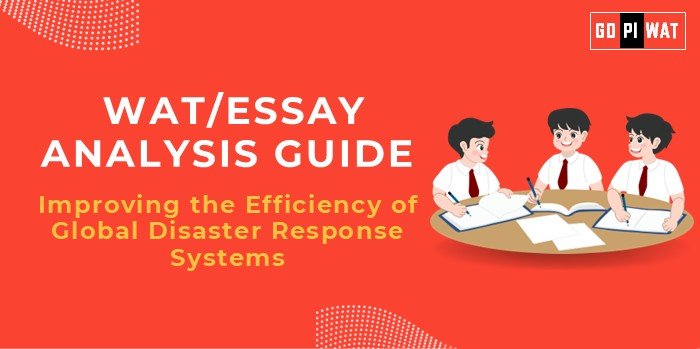📋 Essay Analysis Guide
🌍 Topic: Improving the Efficiency of Global Disaster Response Systems
🌟 Understanding the Topic
Disaster response systems aim to mitigate loss of life and economic damage. Their efficiency depends on collaboration, technological adoption, and addressing systemic inefficiencies such as funding gaps and mismanagement.
🕒 Effective Planning and Writing
- Time Allocation:
- Planning: 5 minutes.
- Writing: 20 minutes.
- Reviewing: 5 minutes.
- Key Preparation Tips:
- Incorporate current statistics, such as the $275 billion economic loss figure.
- Use recent examples like AI-based disaster management tools.
📚 Introduction Techniques for Essays
- Statistical Lead: “Natural disasters caused over $275 billion in economic losses globally in 2022, yet inefficiencies in disaster response cost an additional $10 billion annually.”
- Problem-Solution Start: “While AI reduces response times by 30%, gaps in funding and coordination hinder disaster management outcomes.”
📖 Structuring the Essay Body
🏆 Achievements:
- The UN’s global frameworks have strengthened international disaster response.
- Technological tools like early warning systems have saved thousands of lives.
⚠️ Challenges:
- Funding shortages for developing nations bearing 60% of disaster losses.
- Corruption and inefficiencies lead to delays in aid delivery.
🔮 Future Outlook:
- Increased integration of predictive technology.
- Focused capacity building in vulnerable regions.
🔗 Concluding Effectively
- Balanced Conclusion: “Global disaster response systems have seen significant technological advancements, but governance and funding reforms are necessary to maximize their impact.”
- Forward-Looking Conclusion: “By embracing public-private partnerships and scaling AI solutions, the world can ensure faster, more effective disaster management.”
💡 Analyzing Successes and Shortcomings
- Key Achievements: Technological innovation and global frameworks like the Sendai Framework.
- Ongoing Challenges: Aid mismanagement, funding shortages, and climate change-driven risks.
- Global Context: Best practices from Japan’s earthquake preparedness and the USA’s FEMA operations.
🔧 Recommendations for Sustainable Progress
- Develop global funding mechanisms for disaster response.
- Enhance transparency and accountability in aid distribution.
- Scale AI-based predictive tools to improve early warning systems.
📝 Sample Short Essays
Balanced Perspective:
“While AI has improved disaster response times by 30%, systemic reforms are needed to address mismanagement and funding gaps.”
Solution-Oriented:
“Efficient disaster response requires a synergy of technology, governance, and equitable funding mechanisms to save lives and reduce economic losses.”
Global Comparison:
“By learning from Japan’s disaster preparedness, the global community can develop more resilient and efficient response systems.”


